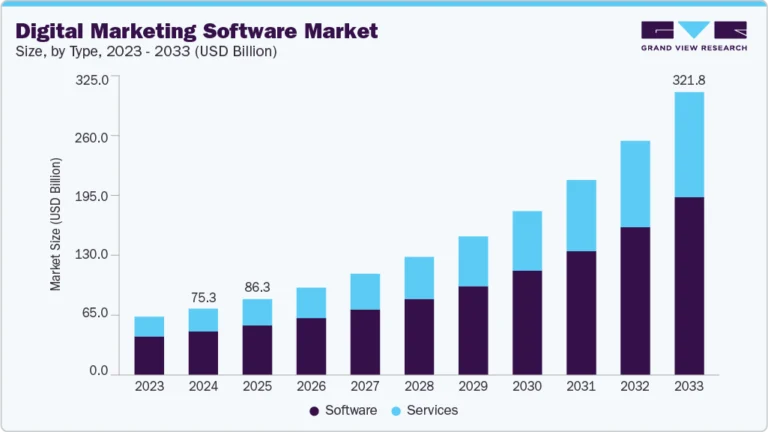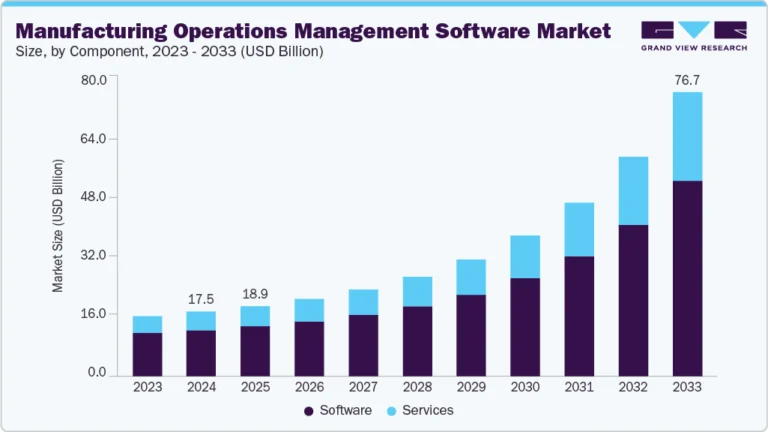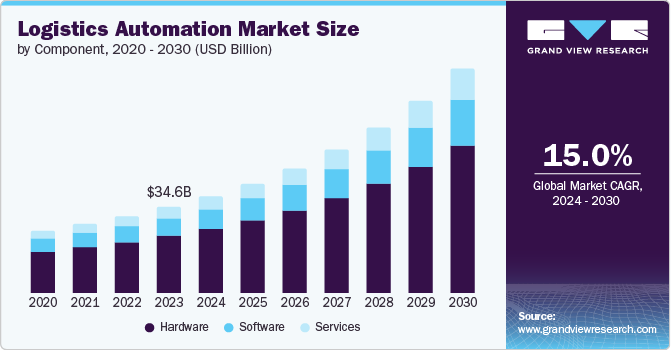Automotive Battery Market Size, Share & Trends Analysis growing at a CAGR of 6.4% from 2024 to 2030

The global automotive battery market size was estimated at USD 69,108.5 million in 2023 and is projected to reach USD 105,612.9 million by 2030, growing at a CAGR of 6.4% from 2024 to 2030. Rising inclination towards adoption of zero-emission electric vehicles and hybrid vehicles over traditional vehicles, advancements in technology, and ease of availability are some of the key primary factors contributing to the growing demand for automotive batteries.
Key Market Trends & Insights
- In terms of region, North America was the largest revenue generating market in 2023.
- In terms of segment, lithium-ion based accounted for a revenue of USD 69,108.5 million in 2023.
- Lithium-Ion Based is the most lucrative type segment registering the fastest growth during the forecast period.
Market Size & Forecast
- 2023 Market Size: USD 69,108.5 Million
- 2030 Projected Market Size: USD 105,612.9 Million
- CAGR (2024-2030): 6.4%
- North America: Largest market in 2023
Request a free sample copy or view report summary: https://www.grandviewresearch.com/industry-analysis/automotive-battery-market/request/rs1
In recent years, major market participants have adopted strategies such as improved research & development efforts, innovation, and capacity enhancements in production plants. It is expected to develop further growth for this industry in the coming years.
The increasing global demand for cleaner energy and sustainable transportation has increased demand for electric vehicles run by batteries. For instance, the European Union has introduced a set of regulations to accomplish its aim to reduce net greenhouse gas emissions by at least 55% by 2030 and become the first climate-neutral continent by 2050. Growing awareness regarding the carbon footprint left by regular petrol/diesel vehicles has developed a large number of opportunities for this industry.
Promotional activities and government support through regulations and initiatives, such as offering subsidies in the total vehicle price, address consumer limitations such as higher initial costs, vehicle range, lack of awareness, and restricted model alternatives. These factors are expected to influence the demand for electric vehicles and, in turn, the automotive battery market. Long-term partnerships established between major manufacturing companies and other vendors have also contributed to the rapid growth of this industry.
Furthermore, the rising investment of companies in expanding production capacity through technological advancements, innovation, process improvements, and facility enhancements is expected to drive the growth of this industry. For instance, in April 2024, Panasonic Energy Co., Ltd., one of the prominent primary battery manufacturers and part of Panasonic Group, completed construction of its new production facility within its Suminoe premise in Osaka, Japan.
Type Insights
The lead-acid type battery segment dominated the global industry and accounted for a share of 53.5% in 2023. This growth is attributed to the increasing inclination toward the use of rechargeable batteries and the cost-effectiveness offered by the lead-acid type. This battery type is suitable for various climatic conditions and extreme temperatures. It has become more reliable for vehicles in regions experiencing extreme heat or cold. Lead-acid batteries have higher energy density than other types. These batteries can store more energy in relatively more minor space while providing a more extended drive range to the vehicles.
The sodium-ion type battery segment is expected to experience a significant CAGR during the forecast period. Factors such as ease of availability and environment-friendly nature drive the rise in the utilization and manufacturing of sodium-ion batteries. Moreover, sodium-ion batteries contain aluminum, available at a lesser price than copper used in lithium-ion batteries, making them a budget-friendly option for consumers and manufacturers. Also, this sodium-ion battery charges faster than lithium-ion batteries and has a higher operating temperature range, making it suitable for use in extreme temperatures.






